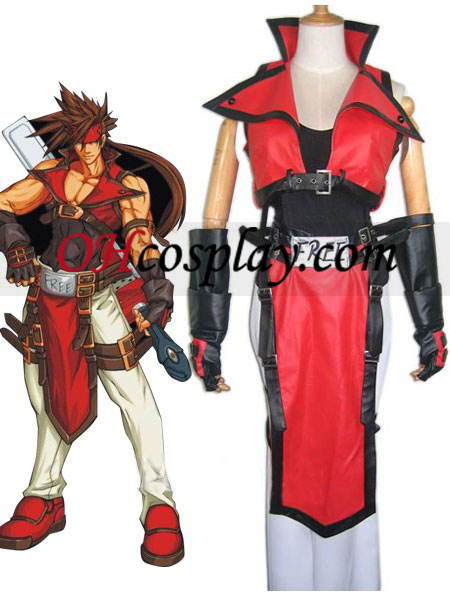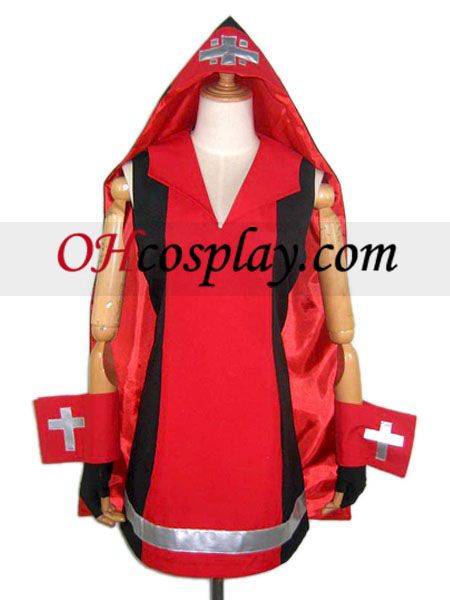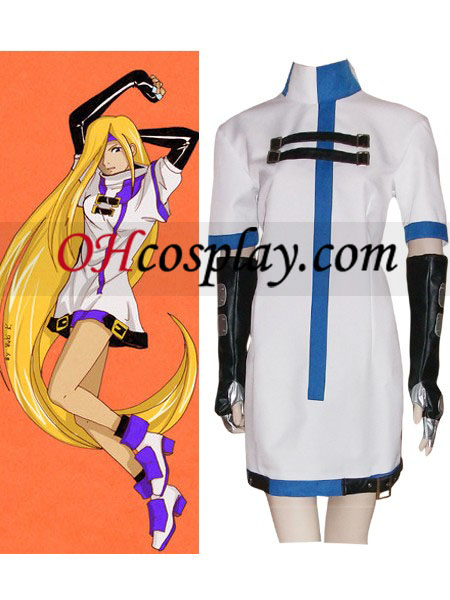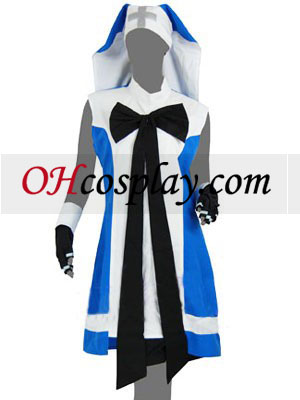The first game in the series, Guilty Gear was released on the PlayStation in 1998. The original Guilty Gear was difficult and its heavy metal aesthetics were unique to the 2D fighting game genre, providing a stark contrast to predecessors such as Darkstalkers and Groove on Fight. In keeping with the looks, the music in this game featured mostly hard rock and heavy metal tracks (generally uncommon for background music in fighting games). Guilty Gear gained some praise from the mainstream video game press such as GameSpot,[1] although it didn't make much of an impact on the video game market, instead becoming something of a cult hit. There is a mobile phone port of this game called Guilty Gear Club.
The release of its sequel Guilty Gear X on the Dreamcast console in 2000 gained much more attention with its gameplay and more detailed graphics. Guilty Gear X was a big development jump as it featured many new characters not seen in the first game of the series. It also had an in-depth and detailed story mode which followed on from the actions of the first Guilty Gear game. Some hailed Guilty Gear X as good competition for the ubiquitous Street Fighter series. Guilty Gear X was the first of the series to spawn many revisions under the Guilty Gear X name. For example, a Japan-only release, Guilty Gear X Plus, was also released in 2001, which fixed various gameplay inconsistencies.
Guilty Gear's popularity in Japan has brought forth considerable amounts of merchandise. In 2001, Arc System Works and Sony Music released drama CDs that fleshed out the game's story in more detail. These drama CDs included narration and voice acting done by the same voice actors from the game. Artwork books were also released, containing production artwork and unseen art drawn by Daisuke Ishiwatari.
In 2001, Sammy released mobile portable versions of the Guilty Gear series for the WonderSwan: Guilty Gear Petit, and its sequel Guilty Gear Petit 2 (later in the same year). They followed the same story line of the previous Guilty Gear X title. These games were only available in Japan.
In 2002, Guilty Gear XX (also known as Guilty Gear X2 in North America) was released. This title furthered the individual stories of each character and improved the combo system. This was soon followed by Guilty Gear XX #Reload (pronounced "Sharp Reload"), which addressed a number of gameplay imbalances in XX and changed both the tiers and the distance between the characters, added a new character legal for use in tournaments, and brought the series online for the first time with Xbox Live. The Guilty Gear XX title has had the most revisions with 5 other titles, Guilty Gear XX Accent Core Plus R (2012) being the most recent.
In 2004, Guilty Gear Isuka ("Isuka" meaning crossbill in Japanese, and representing the way two swords clash) was released, featuring up to four-player simultaneous gameplay, a side-scrolling mode called "Boost Mode", a customizable version of one of the characters, a new playable character, and various other additions. This title did not bear an XX in its name, making this an original Guilty Gear game, not a revision.
In 2009, Arc System Works released Guilty Gear 2: Overture for the Xbox 360, which breaks away from the fighting game genre as it plays like a hybrid between a real-time strategy game and an action game.
As a result of losing the rights of the series to Sega,[2] Arc System Works developed BlazBlue: Calamity Trigger, the first game of the BlazBlue series as a spiritual successor and a "reboot" of the series. Many of the characters, themes and the gameplay elements of the game parallel those found in the Guilty Gear series. In May 2011, Arc System Works regained the rights to Guilty Gear.[3] and released Pro Jumper! Guilty Gear Tangent! in June of that same year.

















